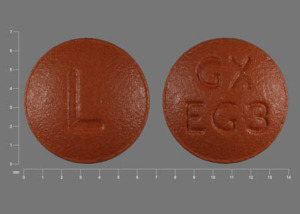Chlorambucil Disease Interactions
There are 5 disease interactions with chlorambucil.
Antineoplastics (applies to chlorambucil) infections
Major Potential Hazard, Moderate plausibility. Applicable conditions: Infection - Bacterial/Fungal/Protozoal/Viral
Because of their cytotoxic effects on rapidly proliferating tissues, antineoplastic agents frequently can, to varying extent, induce myelosuppression. The use of these drugs may be contraindicated in patients with known infectious diseases. All patients should be instructed to immediately report any signs or symptoms suggesting infection such as fever, sore throat, or local infection during antineoplastic therapy. Close clinical monitoring of hematopoietic function is recommended.
Chlorambucil (applies to chlorambucil) myelosuppression
Major Potential Hazard, Moderate plausibility. Applicable conditions: Bleeding, Bone Marrow Depression/Low Blood Counts, Fever
Chlorambucil can severely suppress bone marrow function. It induces a slowly progressive lymphopenia and dose-related neutropenia. Thrombocytopenia and anemia may also occur. Irreversible bone marrow suppression has been reported and is associated with a total dose of or > 6.5 mg/kg in one course of continuous dosing. Therapy with chlorambucil should be administered cautiously and at a reduced dosage in patients whose bone marrow reserve may be depressed by prior chemotherapy or irradiation or whose marrow function is recovering from previous cytotoxic therapy. Patients should be instructed to immediately report any signs or symptoms suggesting bone marrow suppression such as fever, sore throat, local infection, or bleeding. Close clinical monitoring of hematopoietic function is recommended.
Chlorambucil (applies to chlorambucil) hepatic impairment
Moderate Potential Hazard, Moderate plausibility. Applicable conditions: Liver Disease
No formal studies have been conducted in patients with hepatic impairment. As chlorambucil is primarily metabolized in the liver, patients with hepatic impairment should be closely monitored for toxicity. A dose reduction may be considered in patients with hepatic impairment when treated with chlorambucil.
Chlorambucil (applies to chlorambucil) pneumonitis/fibrosis
Moderate Potential Hazard, Moderate plausibility. Applicable conditions: Pulmonary Impairment
Interstitial pneumonitis and/or fibrosis have been reported during chlorambucil therapy. Pulmonary complications may not be reversible in all patients. Patients should be instructed to immediately report signs and symptoms of pulmonary dysfunction such as cough, dyspnea or congestion. Therapy with chlorambucil should be administered cautiously in patients with or predisposed to pulmonary dysfunction.
Chlorambucil (applies to chlorambucil) seizures
Moderate Potential Hazard, Low plausibility.
An increased risk of seizures has been reported in patients administered high pulse doses of chlorambucil and in children with nephrotic syndromes. Focal and/or generalized seizures have been reported rarely at daily therapeutic doses. Therapy with chlorambucil should be administered cautiously in patients with a history of seizure disorders or head trauma.
Switch to professional interaction data
Chlorambucil drug interactions
There are 270 drug interactions with chlorambucil.
More about chlorambucil
- chlorambucil consumer information
- Check interactions
- Compare alternatives
- Reviews (3)
- Side effects
- Dosage information
- During pregnancy
- Drug class: alkylating agents
- Breastfeeding
- En español
Related treatment guides
Drug Interaction Classification
| Highly clinically significant. Avoid combinations; the risk of the interaction outweighs the benefit. | |
| Moderately clinically significant. Usually avoid combinations; use it only under special circumstances. | |
| Minimally clinically significant. Minimize risk; assess risk and consider an alternative drug, take steps to circumvent the interaction risk and/or institute a monitoring plan. | |
| No interaction information available. |
See also:
Further information
Always consult your healthcare provider to ensure the information displayed on this page applies to your personal circumstances.


